Ignore the Deactivating All Inactive Accounts phishing email
Phishing/ScamAlso Known As: Deactivating All Inactive Accounts spam
Get free scan and check if your device is infected.
Remove it nowTo use full-featured product, you have to purchase a license for Combo Cleaner. Seven days free trial available. Combo Cleaner is owned and operated by RCS LT, the parent company of PCRisk.com.
What is Deactivating All Inactive Accounts email scam?
A phishing attack is a type of cyber crime whereby cyber criminals/scammers attempt to deceive users into sharing personal information online. They often perform these attacks via email. In this particular case, scammers use a disguised email to trick recipients into believing that they need to verify an account immediately, otherwise it will be deactivated.
Their main goal is to trick recipients into providing their email credentials.
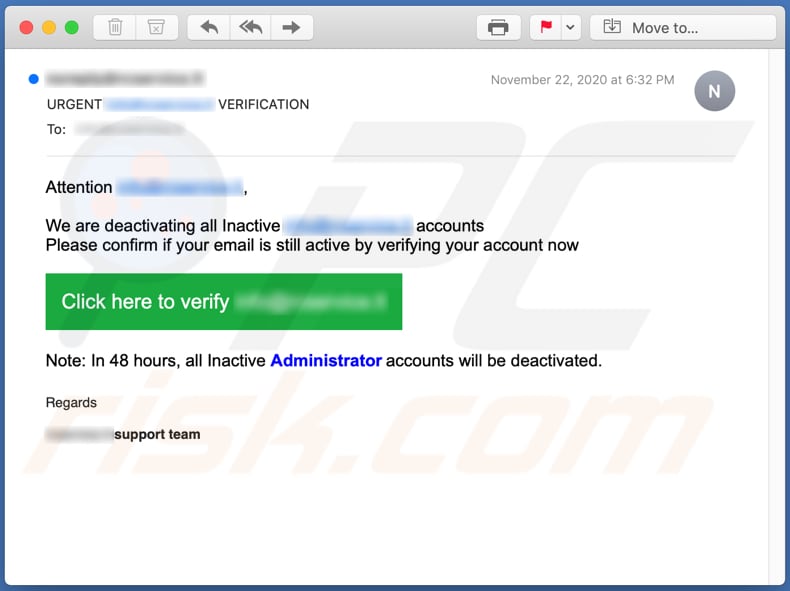
Scammers behind this phishing scam send emails claiming that recipients need to confirm that their email accounts are still active, since all inactive accounts will be deactivated within 48 hours of receiving these emails. The messages contain a website link for a web page on which visitors are asked to enter their email addresses and passwords.
In summary, scammers use the page to steal email credentials. The stolen email accounts could be misused for various malicious purposes. For example, to access sensitive emails, spread this or other phishing scams further, deliver malware, steal identities, trick other people into making financial transactions, providing sensitive information, etc.
Note that scammers could try to steal other accounts as well (such as those that share identical login credentials). In any case, never trust these emails and report them to the relevant authorities.
| Name | Deactivating All Inactive Accounts Email Scam. |
| Threat Type | Phishing, Scam, Social Engineering, Fraud. |
| Fake Claim | Inactive email accounts will be deactivated within 48 hours. |
| Symptoms | Unauthorized online purchases, changed online account passwords, identity theft, illegal access of the computer. |
| Distribution methods | Deceptive emails, rogue online pop-up ads, search engine poisoning techniques, misspelled domains. |
| Damage | Loss of sensitive private information, monetary loss, identity theft. |
| Malware Removal (Windows) |
To eliminate possible malware infections, scan your computer with legitimate antivirus software. Our security researchers recommend using Combo Cleaner. Download Combo CleanerTo use full-featured product, you have to purchase a license for Combo Cleaner. 7 days free trial available. Combo Cleaner is owned and operated by RCS LT, the parent company of PCRisk.com. |
More examples of similar email scams are "Google Forms Email Scam", "SharePoint Email Scam" and "Account Access Disabled Email Scam". In most cases, scammers behind these emails attempt to trick recipients into providing sensitive, personal information.
Note that the emails can be used to extract sensitive details and to trick users into infecting their computers with malware including ransomware, Trojan-type malware, etc.
How do spam campaigns infect computers
Malware (including ransomware) is usually distributed via malspam campaigns, unofficial software activation ('cracking') tools, Trojans, dubious file/software download sources, and fake software updating tools. When cyber criminals attempt to distribute malware via malspam campaigns, they send emails that contain malicious attachments or download links for malicious files.
Typically, they disguise their emails as official and important. If recipients open the attached file (or a file downloaded via a website link), they cause installation of malicious software. Cyber criminals commonly attach executable files (.exe), archive files such as RAR, ZIP, PDF documents, JavaScript files and Microsoft Office documents to their emails.
Software 'cracking' tools supposedly activate licensed software illegally (bypass activation), however, they often install malicious programs and do not activate any legitimate installed software. Trojans are other rogue programs that can cause chain infections. I.e., when a Trojan is installed on the operating system, it can install additional malware.
Free file hosting websites, freeware download websites, Peer-to-Peer networks (e.g., torrent clients, eMule), unofficial websites, and third party downloaders are examples of other sources that are used to distribute malware. Cyber criminals disguise malicious files as legitimate and regular.
When users download and open them, they inadvertently infect their computers with malware. Fake software updating tools install malicious software rather than updates/fixes for installed programs, or they exploit bugs/flaws of outdated software that is installed on the operating system.
How to avoid installation of malware
To avoid infecting the system with malware spread through spam mail, you are strongly advised not to open suspicious or irrelevant emails, especially those with any attachments or links present in them. Use official and verified download channels.
Additionally, all programs must be activated and updated with tools/functions provided by legitimate developers, since illegal activation tools ("cracks") and third party updaters commonly proliferate malicious software. To ensure device integrity and user safety, it is paramount to have reputable anti-virus/anti-spyware installed and kept updated.
Furthermore, use these programs to run regular system scans and to remove detected/potential threats. If you have already opened malicious attachments, we recommend running a scan with Combo Cleaner Antivirus for Windows to automatically eliminate infiltrated malware.
Text presented in the Deactivating All Inactive Accounts email message:
Subject: URGENT ******** VERIFICATION
Attention ********,
We are deactivating all Inactive ******** accounts
Please confirm if your email is still active by verifying your account now
Click here to verify ********Note: In 48 hours, all Inactive Administrator accounts will be deactivated.
Regards******** support team
Screenshot of the website that scammers user to steal email credentials:
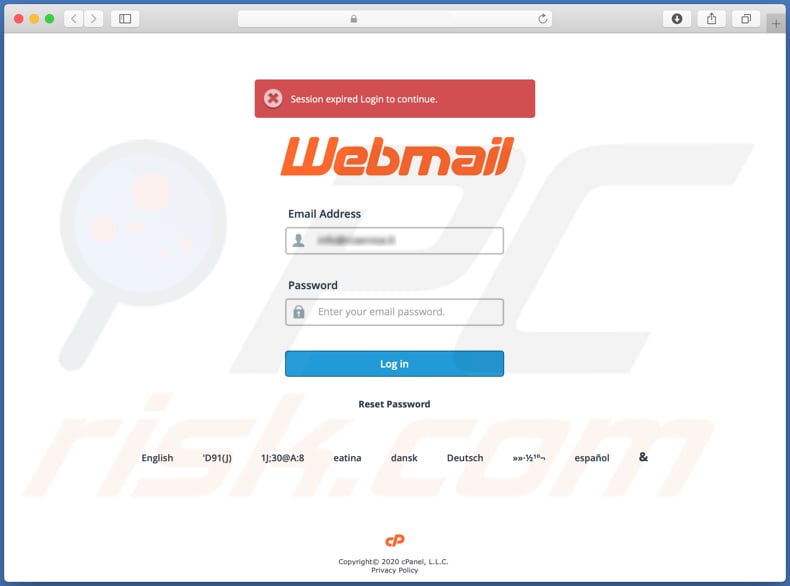
Other examples of emails from "" spam campaign:
Sample 1:
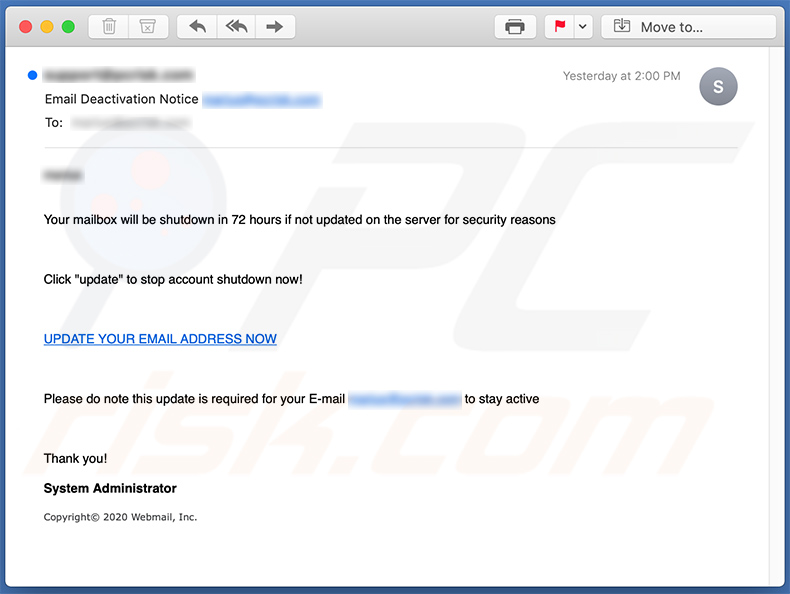
Text presented within:
Subject: Email Deactivation Notice
-
Your mailbox will be shutdown in 72 hours if not updated on the server for security reasonsClick "update" to stop account shutdown now!
UPDATE YOUR EMAIL ADDRESS NOW
Please do note this update is required for your E-mail ******** to stay active
Thank you!
System Administrator
Copyright© 2020 Webmail, Inc.
Screenshot of the promoted phishing website:
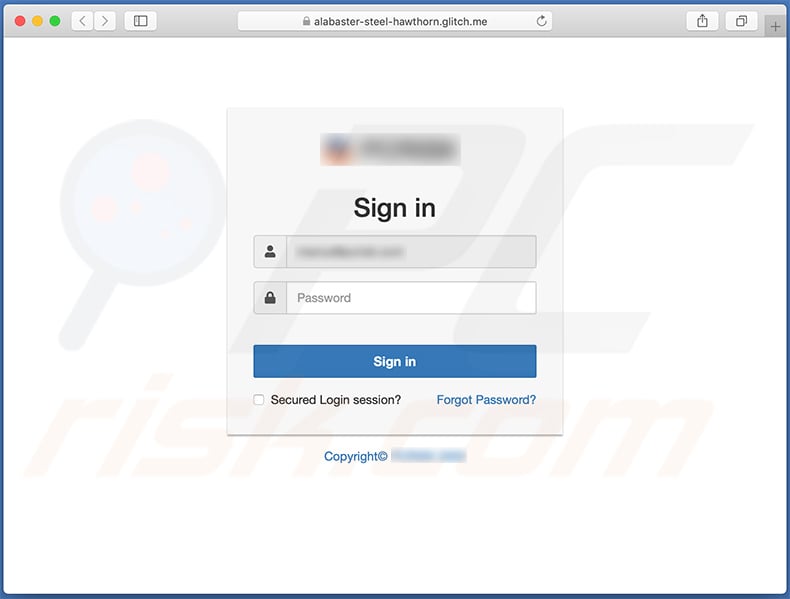
Sample 2:
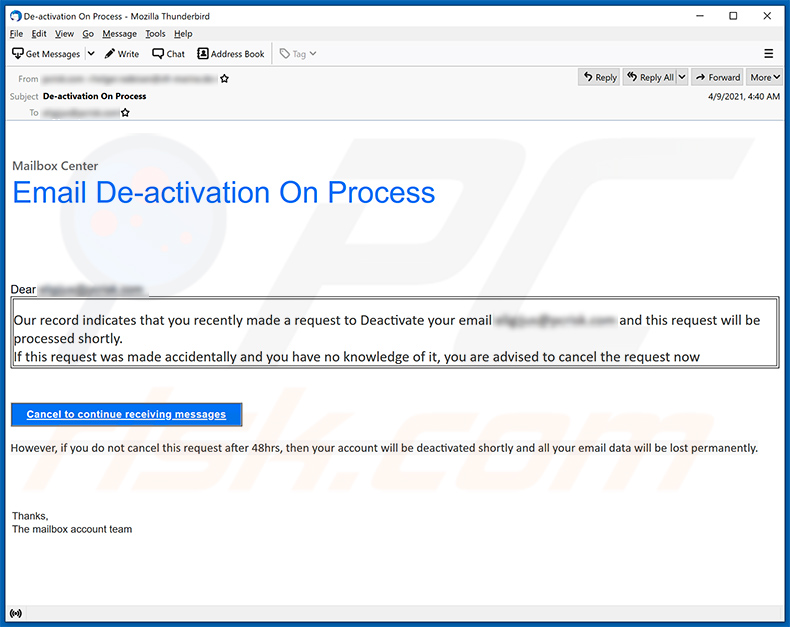
Text presented within:
Subject: De-activation On Process
Mailbox Center
Email De-activation On ProcessDear ********
Our record indicates that you recently made a request to Deactivate your email ******** and this request will be processed shortly.
If this request was made accidentally and you have no knowledge of it, you are advised to cancel the request now
Cancel to continue receiving messagesHowever, if you do not cancel this request after 48hrs, then your account will be deactivated shortly and all your email data will be lost permanently.
Thanks,
The mailbox account team
Sample 3:
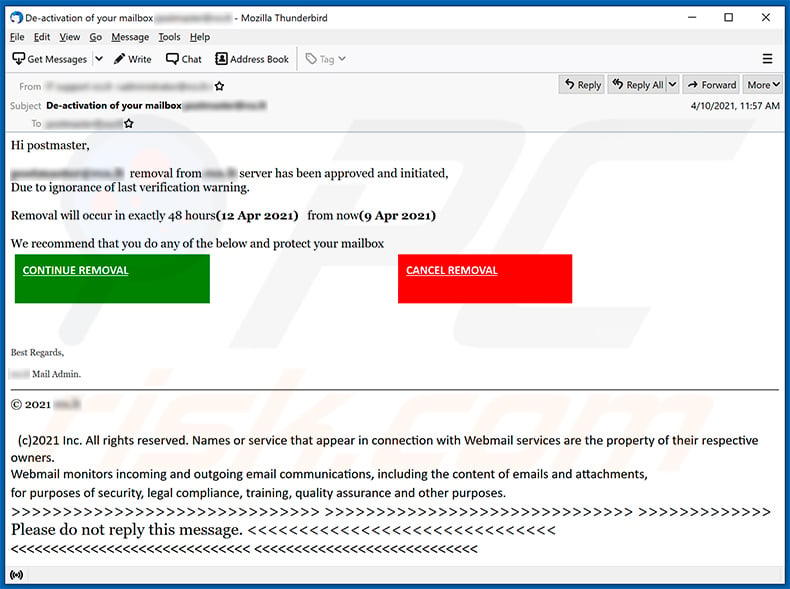
Text presented within:
Subject: De-activation of your mailbox ********
Hi ********,
******** removal from ******** server has been approved and initiated,
Due to ignorance of last verification warning.Removal will occur in exactly 48 hours(12 Apr 2021) from now(9 Apr 2021)
We recommend that you do any of the below and protect your mailbox
CONTINUE REMOVAL
CANCEL REMOVAL
Best Regards,
******** Mail Admin.
© 2021 ********(c)2021 Inc. All rights reserved. Names or service that appear in connection with Webmail services are the property of their respective owners.
Webmail monitors incoming and outgoing email communications, including the content of emails and attachments,
for purposes of security, legal compliance, training, quality assurance and other purposes.
Please do not reply this message.
Sample 4:
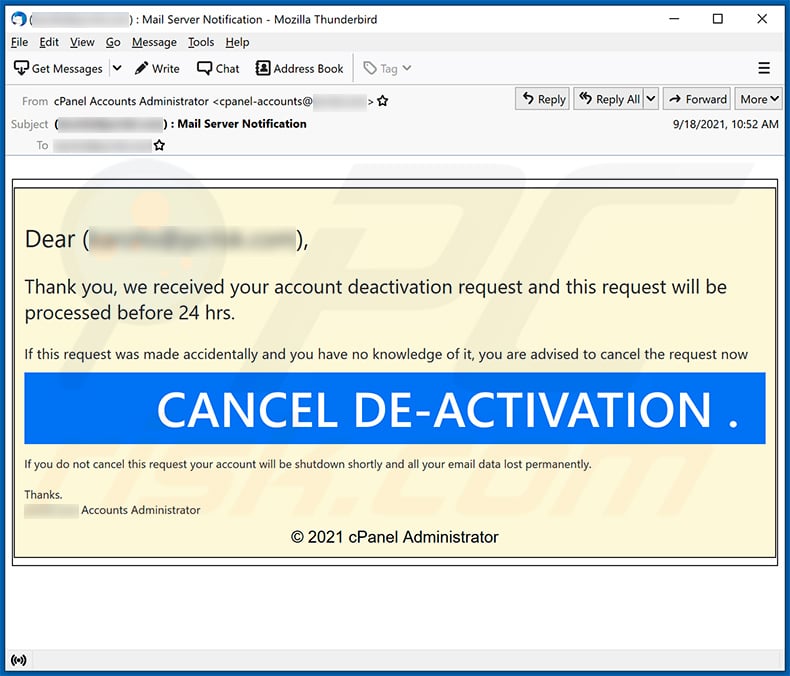
Text presented within:
Subject: (********) : Mail Server Notification
Dear (********),
Thank you, we received your account deactivation request and this request will be processed before 24 hrs.
If this request was made accidentally and you have no knowledge of it, you are advised to cancel the request now
CANCEL DE-ACTIVATION .If you do not cancel this request your account will be shutdown shortly and all your email data lost permanently.
Thanks.
******** Accounts Administrator
2021 cPanel Administrator
Sample 5:
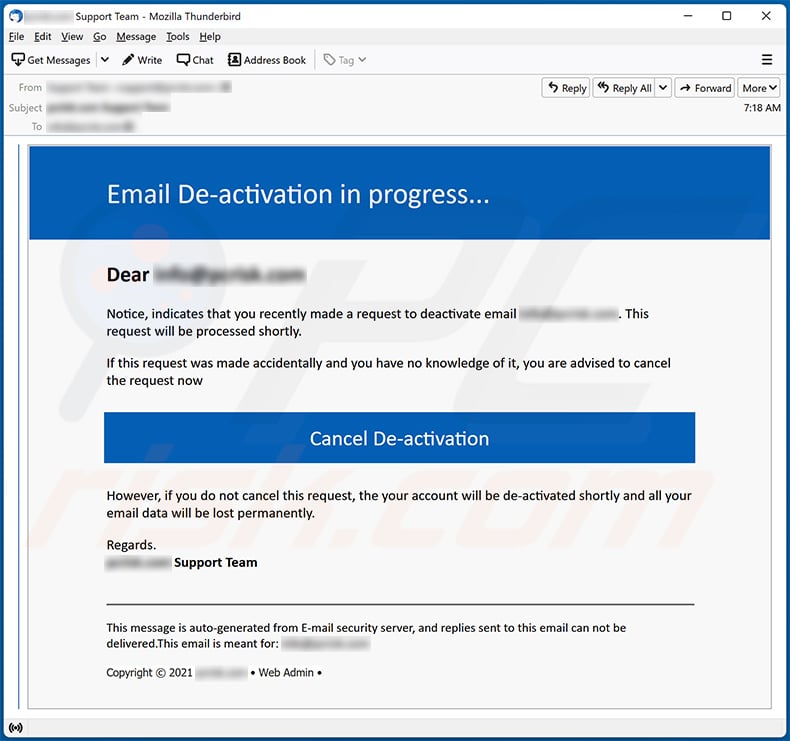
Text presented within:
Subject: ******** Support Team
Email De-activation in progress...Dear ********
Notice, indicates that you recently made a request to deactivate email ********. This request will be processed shortly.
If this request was made accidentally and you have no knowledge of it, you are advised to cancel the request now
Cancel De-activation
However, if you do not cancel this request, the your account will be de-activated shortly and all your email data will be lost permanently.
Regards.
******** Support Team
This message is auto-generated from E-mail security server, and replies sent to this email can not be delivered.This email is meant for: ********Copyright © 2021 ******** • Web Admin •
Sample 6:
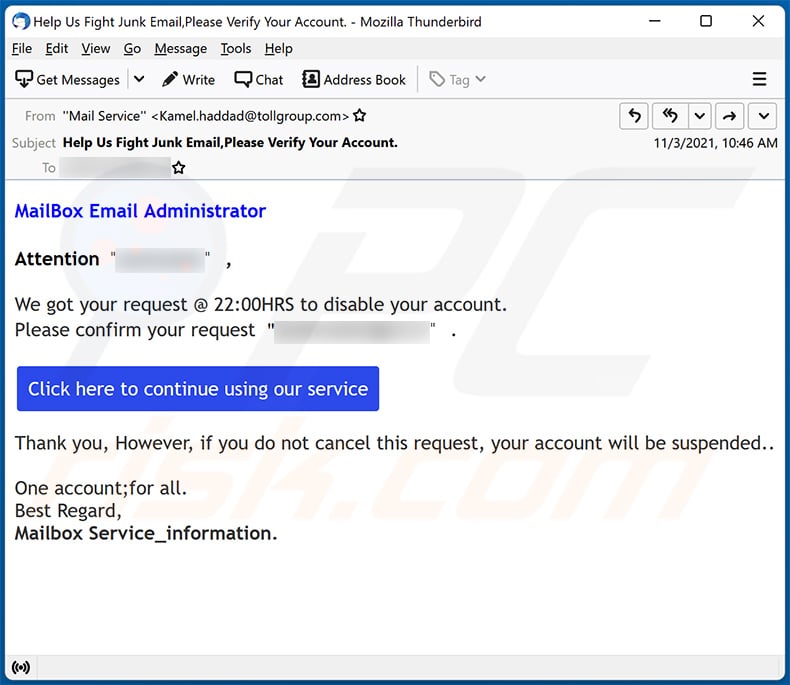
Text presented within:
Subject: Help Us Fight Junk Email,Please Verify Your Account.
MailBox Email AdministratorAttention "*********" ,
We got your request @ 22:00HRS to disable your account.
Please confirm your request "*********" .Click here to continue using our service
Thank you, However, if you do not cancel this request, your account will be suspended..
One account;for all.
Best Regard,
Mailbox Service_information.
Screenshot of the promoted phishing site:
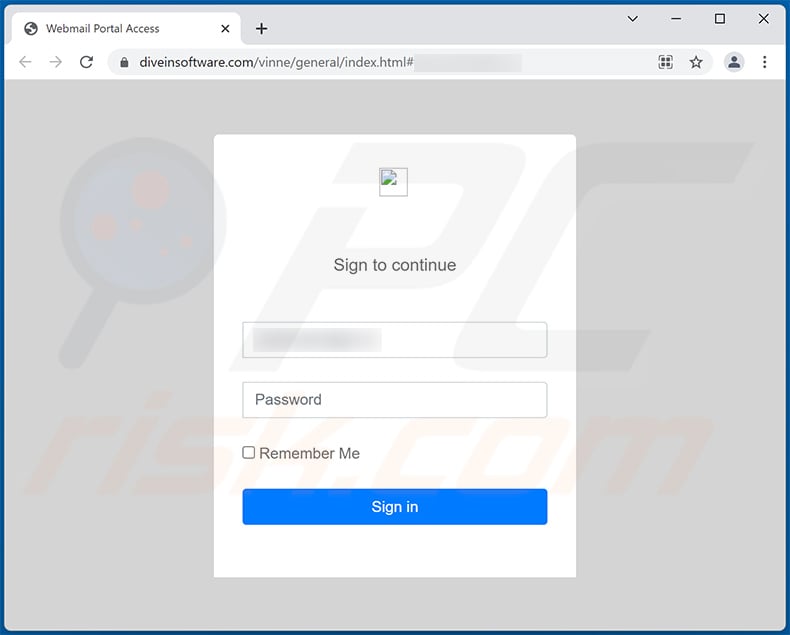
Sample 7:
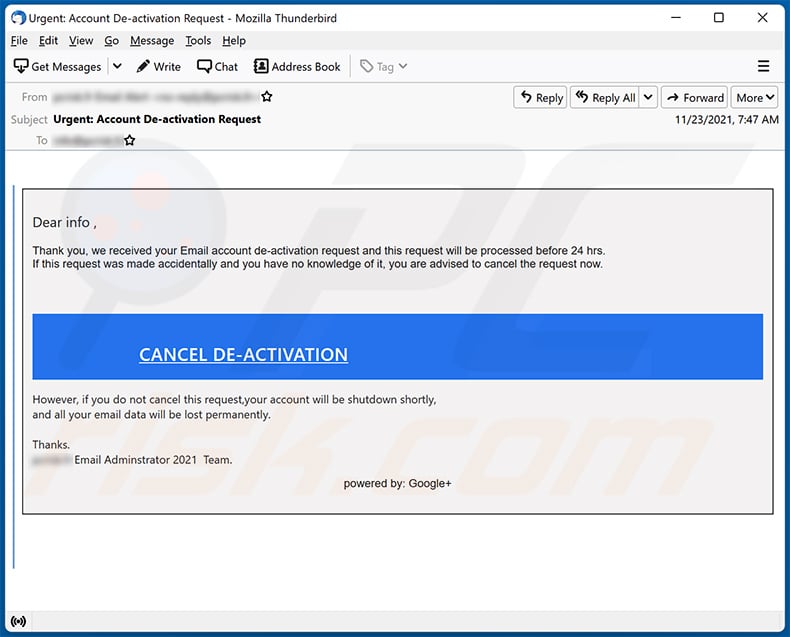
Text presented within:
Subject: Urgent: Account De-activation Request
Dear - ,
Thank you, we received your Email account de-activation request and this request will be processed before 24 hrs.
If this request was made accidentally and you have no knowledge of it, you are advised to cancel the request now.
CANCEL DE-ACTIVATIONHowever, if you do not cancel this request,your account will be shutdown shortly,
and all your email data will be lost permanently.Thanks.
- Email Adminstrator 2021 Team.
powered by: Google+
Screenshot of the promoted phishing site:
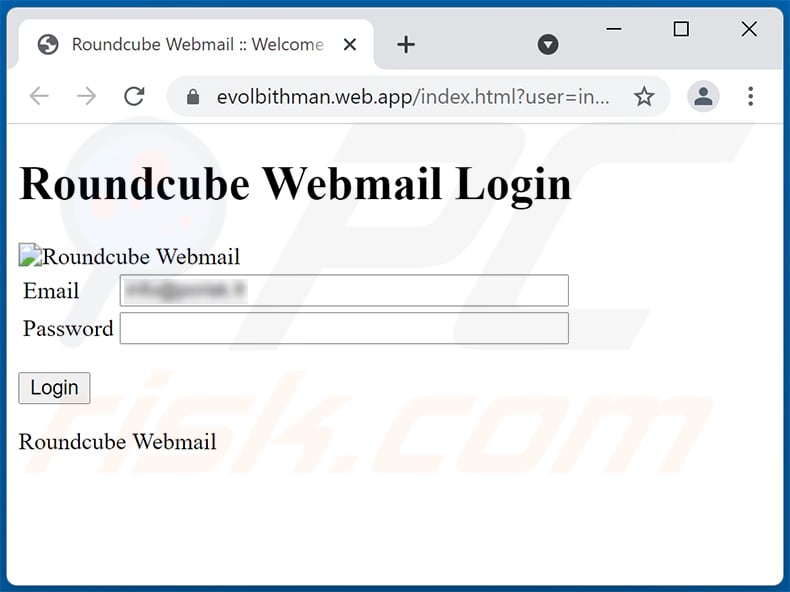
Sample 8:
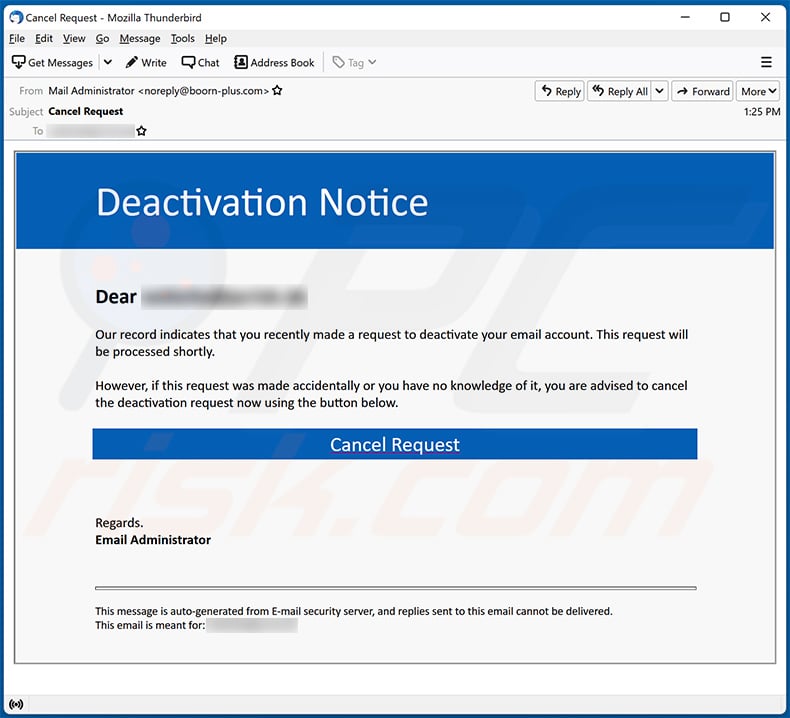
Text presented within:
Subject: Cancel Request
Deactivation Notice
Dear -Our record indicates that you recently made a request to deactivate your email account. This request will be processed shortly.
However, if this request was made accidentally or you have no knowledge of it, you are advised to cancel the deactivation request now using the button below.Cancel Request
Regards.
Email AdministratorThis message is auto-generated from E-mail security server, and replies sent to this email cannot be delivered.
This email is meant for: -.
Screenshot of the promoted phishing site:
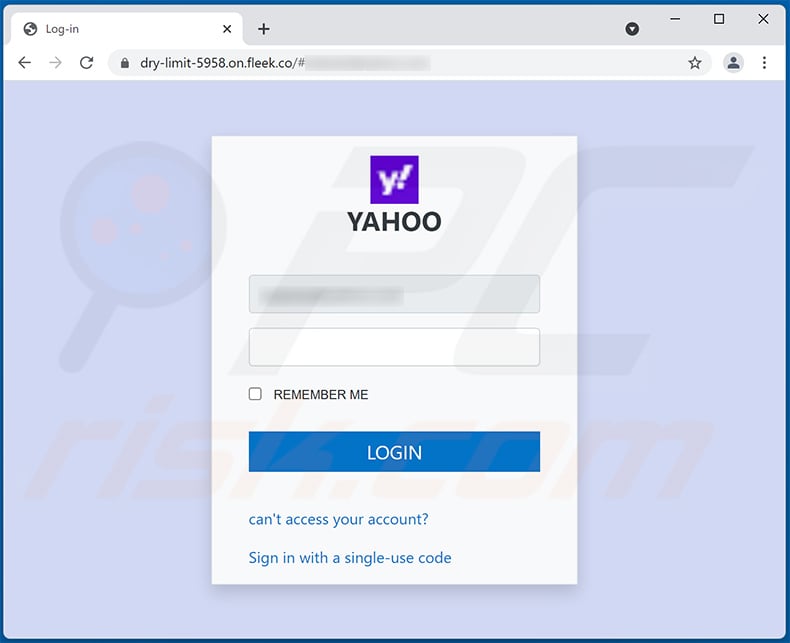
Sample 9:
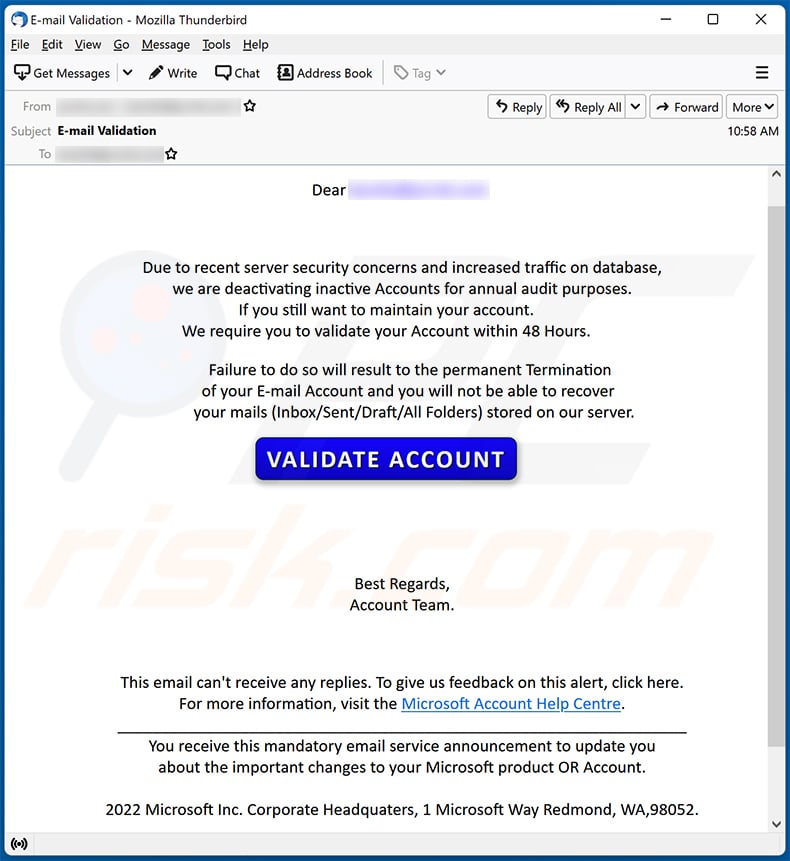
Text presented within:
Subject: E-mail Validation
Dear -
Due to recent server security concerns and increased traffic on database,
we are deactivating inactive Accounts for annual audit purposes.
If you still want to maintain your account.
We require you to validate your Account within 48 Hours.Failure to do so will result to the permanent Termination
of your E-mail Account and you will not be able to recover
your mails (Inbox/Sent/Draft/All Folders) stored on our server.Best Regards,
Account Team.
This email can't receive any replies. To give us feedback on this alert, click here.
For more information, visit the Microsoft Account Help Centre.
_________________________________________________________________
You receive this mandatory email service announcement to update you
about the important changes to your Microsoft product OR Account.2022 Microsoft Inc. Corporate Headquaters, 1 Microsoft Way Redmond, WA,98052.
Screenshot of the promoted phishing site designed to imitate the appearance of user's email provider:
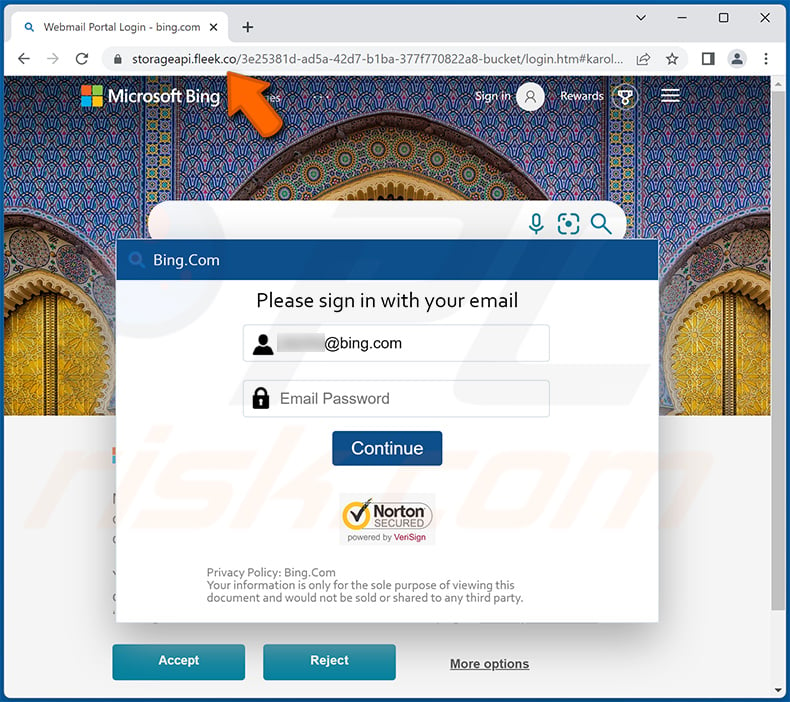
Sample 10:
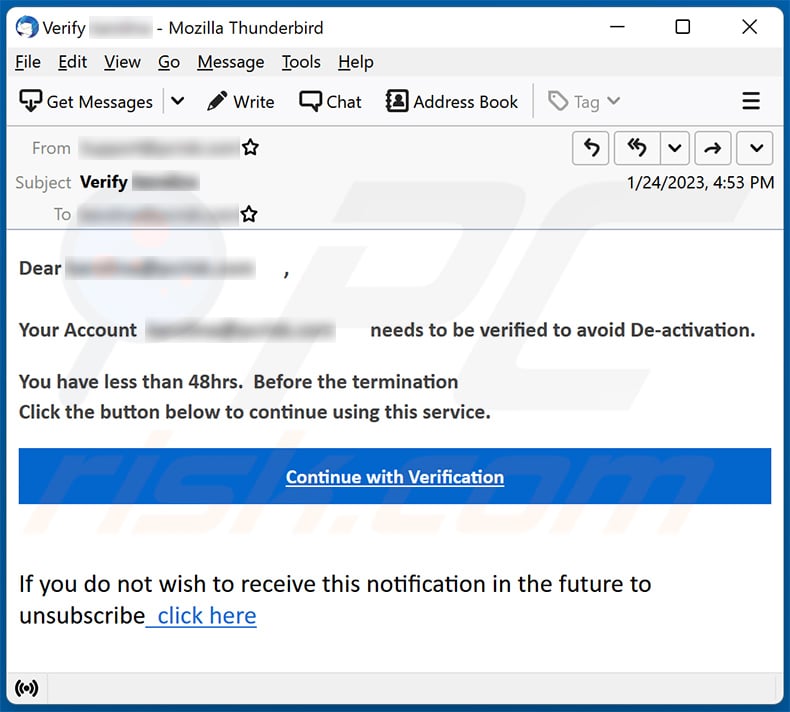
Text presented within:
Subject: Verify ********
Dear ******** ,
Your Account ******** needs to be verified to avoid De-activation.
You have less than 48hrs. Before the termination
Click the button below to continue using this service.
Continue with VerificationIf you do not wish to receive this notification in the future to unsubscribe click here
Instant automatic malware removal:
Manual threat removal might be a lengthy and complicated process that requires advanced IT skills. Combo Cleaner is a professional automatic malware removal tool that is recommended to get rid of malware. Download it by clicking the button below:
DOWNLOAD Combo CleanerBy downloading any software listed on this website you agree to our Privacy Policy and Terms of Use. To use full-featured product, you have to purchase a license for Combo Cleaner. 7 days free trial available. Combo Cleaner is owned and operated by RCS LT, the parent company of PCRisk.com.
Quick menu:
- What is Deactivating All Inactive Accounts spam?
- Types of malicious emails.
- How to spot a malicious email?
- What to do if you fell for an email scam?
Types of malicious emails:
![]() Phishing Emails
Phishing Emails
Most commonly, cybercriminals use deceptive emails to trick Internet users into giving away their sensitive private information, for example, login information for various online services, email accounts, or online banking information.
Such attacks are called phishing. In a phishing attack, cybercriminals usually send an email message with some popular service logo (for example, Microsoft, DHL, Amazon, Netflix), create urgency (wrong shipping address, expired password, etc.), and place a link which they hope their potential victims will click on.
After clicking the link presented in such email message, victims are redirected to a fake website that looks identical or extremely similar to the original one. Victims are then asked to enter their password, credit card details, or some other information that gets stolen by cybercriminals.
![]() Emails with Malicious Attachments
Emails with Malicious Attachments
Another popular attack vector is email spam with malicious attachments that infect users' computers with malware. Malicious attachments usually carry trojans that are capable of stealing passwords, banking information, and other sensitive information.
In such attacks, cybercriminals' main goal is to trick their potential victims into opening an infected email attachment. To achieve this goal, email messages usually talk about recently received invoices, faxes, or voice messages.
If a potential victim falls for the lure and opens the attachment, their computers get infected, and cybercriminals can collect a lot of sensitive information.
While it's a more complicated method to steal personal information (spam filters and antivirus programs usually detect such attempts), if successful, cybercriminals can get a much wider array of data and can collect information for a long period of time.
![]() Sextortion Emails
Sextortion Emails
This is a type of phishing. In this case, users receive an email claiming that a cybercriminal could access the webcam of the potential victim and has a video recording of one's masturbation.
To get rid of the video, victims are asked to pay a ransom (usually using Bitcoin or another cryptocurrency). Nevertheless, all of these claims are false - users who receive such emails should ignore and delete them.
How to spot a malicious email?
While cyber criminals try to make their lure emails look trustworthy, here are some things that you should look for when trying to spot a phishing email:
- Check the sender's ("from") email address: Hover your mouse over the "from" address and check if it's legitimate. For example, if you received an email from Microsoft, be sure to check if the email address is @microsoft.com and not something suspicious like @m1crosoft.com, @microsfot.com, @account-security-noreply.com, etc.
- Check for generic greetings: If the greeting in the email is "Dear user", "Dear @youremail.com", "Dear valued customer", this should raise suspiciousness. Most commonly, companies call you by your name. Lack of this information could signal a phishing attempt.
- Check the links in the email: Hover your mouse over the link presented in the email, if the link that appears seems suspicious, don't click it. For example, if you received an email from Microsoft and the link in the email shows that it will go to firebasestorage.googleapis.com/v0... you shouldn't trust it. It's best not to click any links in the emails but to visit the company website that sent you the email in the first place.
- Don't blindly trust email attachments: Most commonly, legitimate companies will ask you to log in to their website and to view any documents there; if you received an email with an attachment, it's a good idea to scan it with an antivirus application. Infected email attachments are a common attack vector used by cybercriminals.
To minimise the risk of opening phishing and malicious emails we recommend using Combo Cleaner Antivirus for Windows.
Example of a spam email:

What to do if you fell for an email scam?
- If you clicked on a link in a phishing email and entered your password - be sure to change your password as soon as possible. Usually, cybercriminals collect stolen credentials and then sell them to other groups that use them for malicious purposes. If you change your password in a timely manner, there's a chance that criminals won't have enough time to do any damage.
- If you entered your credit card information - contact your bank as soon as possible and explain the situation. There's a good chance that you will need to cancel your compromised credit card and get a new one.
- If you see any signs of identity theft - you should immediately contact the Federal Trade Commission. This institution will collect information about your situation and create a personal recovery plan.
- If you opened a malicious attachment - your computer is probably infected, you should scan it with a reputable antivirus application. For this purpose, we recommend using Combo Cleaner Antivirus for Windows.
- Help other Internet users - report phishing emails to Anti-Phishing Working Group, FBI’s Internet Crime Complaint Center, National Fraud Information Center and U.S. Department of Justice.
Share:

Tomas Meskauskas
Expert security researcher, professional malware analyst
I am passionate about computer security and technology. I have an experience of over 10 years working in various companies related to computer technical issue solving and Internet security. I have been working as an author and editor for pcrisk.com since 2010. Follow me on Twitter and LinkedIn to stay informed about the latest online security threats.
PCrisk security portal is brought by a company RCS LT.
Joined forces of security researchers help educate computer users about the latest online security threats. More information about the company RCS LT.
Our malware removal guides are free. However, if you want to support us you can send us a donation.
DonatePCrisk security portal is brought by a company RCS LT.
Joined forces of security researchers help educate computer users about the latest online security threats. More information about the company RCS LT.
Our malware removal guides are free. However, if you want to support us you can send us a donation.
Donate
▼ Show Discussion